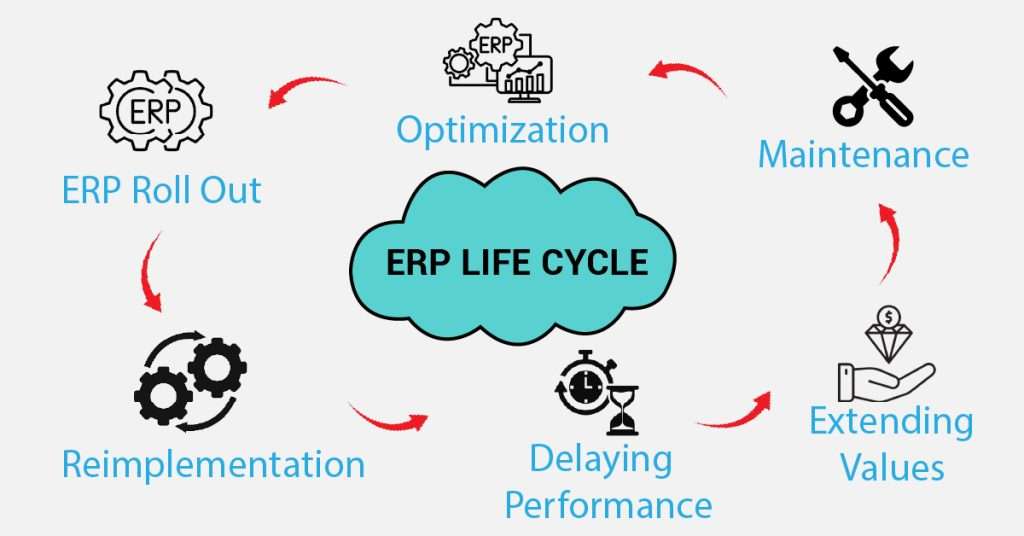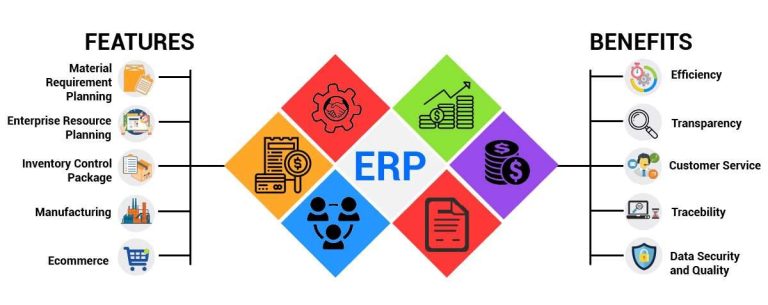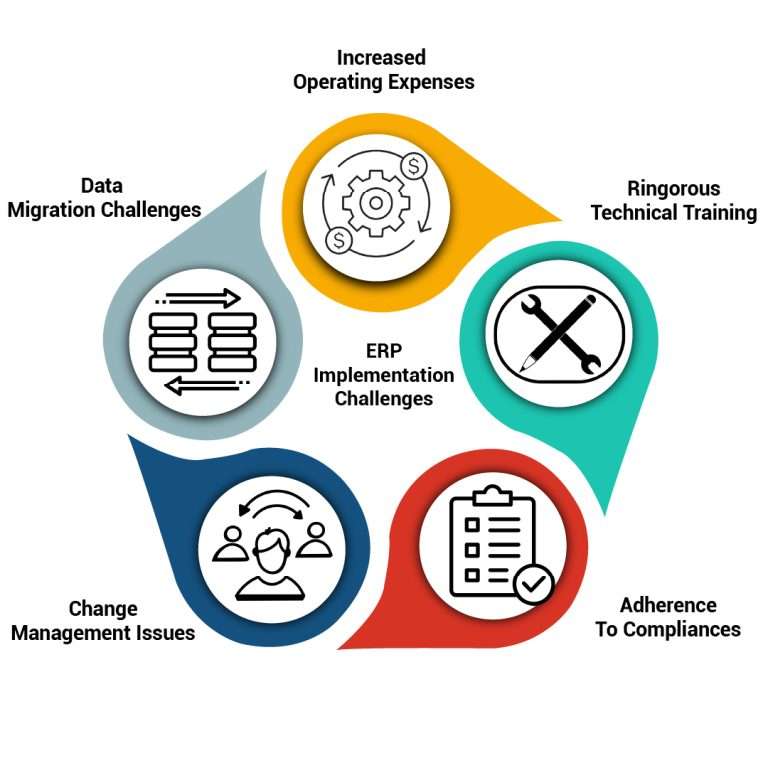The Benefits and Challenges of ERP Implementation
Introduction
Imagine a company without an ERP system as a circus without a ringmaster. Chaos ensues, lions roam free, and tightrope walkers teeter on the edge of disaster. Now, enter ERP implementation—the ringmaster that brings order, efficiency, and success to the circus.
Enterprise Resource Planning(ERP) implementation involves the integration of various business processes and functions into a centralized software system. It aims to improve efficiency, provide real-time organizational visibility, and streamline operations.
Process Of ERP Implementation
ERP implementation has become a common practice across various industries, as organizations recognize its benefits in streamlining operations and enhancing productivity. In the manufacturing industry, companies like Toyota, General Electric, and Procter & Gamble have implemented ERP systems to integrate their supply chain management, production planning, and inventory control processes. These implementations have led to improved inventory management, reduced lead times, and enhanced visibility across the production line.

During the initial stages, organizations analyze their existing processes, identify critical points, and define their business requirements. This involves mapping workflows, data flows, and system integrations to create a comprehensive implementation plan.
Once the requirements are defined, the ERP system is configured to align with the organization’s processes. This includes setting up modules, defining user roles and permissions, and customizing the system to meet specific needs.
Existing data from various systems or spreadsheets are migrated to the new ERP system. This ensures data consistency, accuracy, and accessibility across the organization. It also allows historical data analysis and reporting.
Thorough testing is conducted to ensure the ERP system functions properly and meets the desired outcomes. User training programs are implemented to familiarize employees with the new system and optimize its usage.
After successful testing and training, the ERP system is launched. Organizations provide ongoing support, monitor system performance, and address any issues or user queries that arise.
Overall, ERP implementation offers several benefits by integrating business processes, enhancing visibility, and improving efficiency. It enables businesses to run more efficiently, make informed decisions, and maintain their competitiveness in a rapidly changing business environment.
Benefits Of ERP Implementation
The confusion of manual processes and different systems is brought under control by ERP deployment. Businesses can streamline their operations and get rid of unnecessary activities by combining diverse departments and services into a single system. Shorter turnaround times, increased efficiency, and fewer errors result from this streamlined strategy. Employees can concentrate on value-added tasks using automation and consistent workflows, thereby increasing productivity.
The capacity to acquire real-time visibility into essential business information is one of the main advantages of ERP adoption. ERP systems offer thorough reporting and analytics capabilities, empowering decision-making with precise and recent data. Organisations can make wise decisions, see patterns, and deal with problems before they become serious if they have access to thorough insights. Making decisions based on data becomes a strategic advantage that helps organisations remain adaptable in a changing marketplace.
Cross-functional teamwork is promoted by ERP installation, which dissolves departmental silos. Employees from different teams may access and share information with ease by centralising data and processes. Through this seamless connection, communication is improved, knowledge sharing is made possible, and teamwork is fostered. Businesses can coordinate their efforts, foster synergy, and realise shared objectives when everyone is on the same page.
ERP implementation can lead to cost savings through optimized inventory management, reduced manual errors, and improved resource utilization. It eliminates the need for multiple software systems and improves overall productivity.
Having a competitive edge is essential for success in today’s competitive environment. Implementing ERP can provide companies that advantage. Organisations may set themselves apart from rivals by expanding data visibility, optimising procedures, and boosting efficiency. Companies can react swiftly to market developments, client needs, and industry trends thanks to ERP systems. They can stay ahead of the curve and take advantage of new chances because to their agility.
Businesses must modify their systems and procedures as they expand to meet changing customer expectations. ERP systems are made to be scalable, allowing corporate growth without sacrificing effectiveness. Organisations may grow their operations, serve various locations, and handle higher transaction volumes with ERP deployment. ERP systems’ flexibility guarantees that companies may scale up or down as necessary, laying a strong basis for future growth.

Challenges of ERP Implementation
The process of implementing Enterprise Resource Planning (ERP) is like to strapping yourself onto a terrifying rollercoaster. You have seen the warnings and heard the tales, and now you are ready to live the thrill. However, with enterprise software, who needs adrenaline?
The cost of implementing ERP is frequently prohibitive. The following are some causes of potentially high costs:
- High licensing fees for the ERP system
- Infrastructure upgrades such as servers and networks
- Customizations and integrations with other systems
- Training and consultancy costs
To reduce the cost of ERP implementation, consider the following:
- Evaluate the need for customizations and integrations and prioritize them
- Utilize cloud-based ERP solutions instead of on-premise infrastructure
- Train key personnel in-house instead of hiring external consultants
When it comes to putting an ERP system into place, resistance to change presents a significant obstacle. Employee resistance to change may occur for the following reasons:
- Fear of losing their jobs due to automation
- Difficulty in adapting to new systems
- Unclear communication and unrealistic expectations from management
Managing resistance to change is crucial for successful ERP implementation. Here are some ways to do it:
- Communicate clearly and consistently with employees about the reasons for change
- Involve employees in the planning and implementation process
- Provide adequate training and support to adapt to the new system

Integration of ERP systems with other existing systems, including as CRM, HR, and finance systems, is common. There is a need for integration for the following reasons:
- Preventing double data entering
- To present a comprehensive analysis of corporate operations
To make data-driven operations automatize, Consider the following best practices to guarantee successful integration:
- Before implementing the ERP system, determine whether it is compatible with the current systems.
- Create a thorough integration strategy that addresses data flows and processes.
- Before going live, thoroughly test the integration.
The quality of data in an ERP system is critical for decision-making and business operations. Poor data quality can result in inaccurate reports and flawed decision-making. Here are some reasons why data quality can be a challenge:
- Data entry errors and inconsistencies
- Lack of data validation and governance processes
- Inadequate data backup and disaster recovery plans
To maintain good data quality in an ERP system, consider the following strategies:
- Develop data governance policies and procedures for data entry and validation
- Train employees on the importance of data quality and their role in maintaining it
- Regularly monitor and clean up data to ensure accuracy and completeness
Conclusion
There are a number of obstacles to installing an ERP system, but these obstacles can be overcome with good design and execution. Organisations can maximize the advantages of ERP deployment by concentrating on cost cutting, managing opposition to change, guaranteeing successful integration, and maintaining acceptable data quality.
